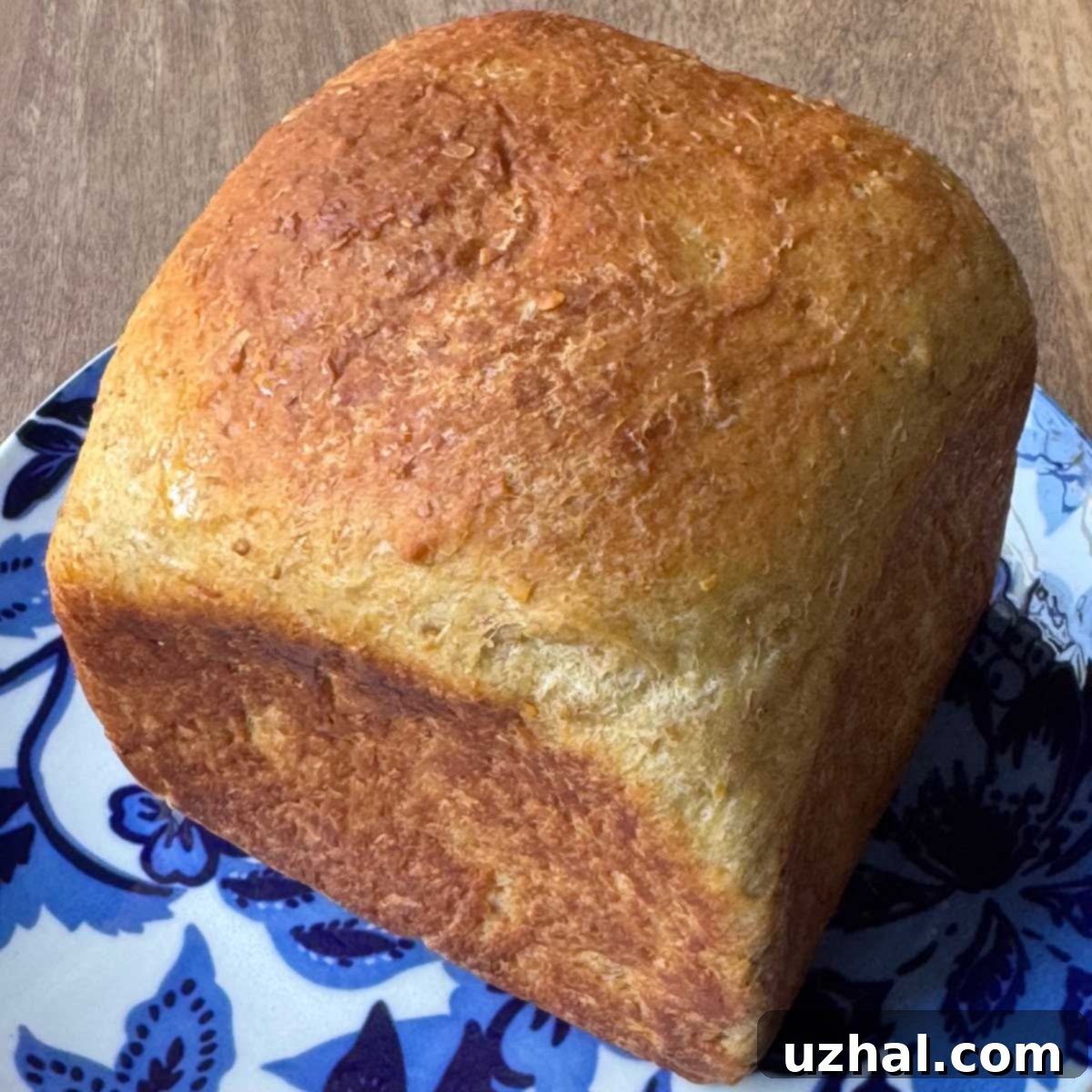Bake the Best Low Carb Bread: Your Ultimate Guide to a Fluffy, Keto-Friendly Loaf
Discovering a truly delicious low-carb bread recipe can be a game-changer for anyone following a keto lifestyle or simply looking to reduce their carbohydrate intake. While you might not expect such a recipe on a site like Cookie Madness, I’m thrilled to share this particular gem with you. It’s not just a recipe; it’s a weekly staple in my kitchen, and for good reason. This bread is remarkably keto-friendly, boasting a low carbohydrate count, a significant protein boost, and a wonderfully light and springy texture that makes you forget it’s low-carb at all. It’s incredibly versatile, perfect for crafting savory sandwiches, but it truly shines when toasted and slathered with your favorite nut butter. If you’ve tried commercial options like Aldi’s keto bread, you’ll find this homemade version to be a delightful improvement – a touch sweeter, chewier, and with an unparalleled fresh taste. As of now, it stands as my absolute best low-carb bread recipe, and I’m confident it will become a favorite in your home too, offering a satisfying and wholesome alternative to traditional loaves.
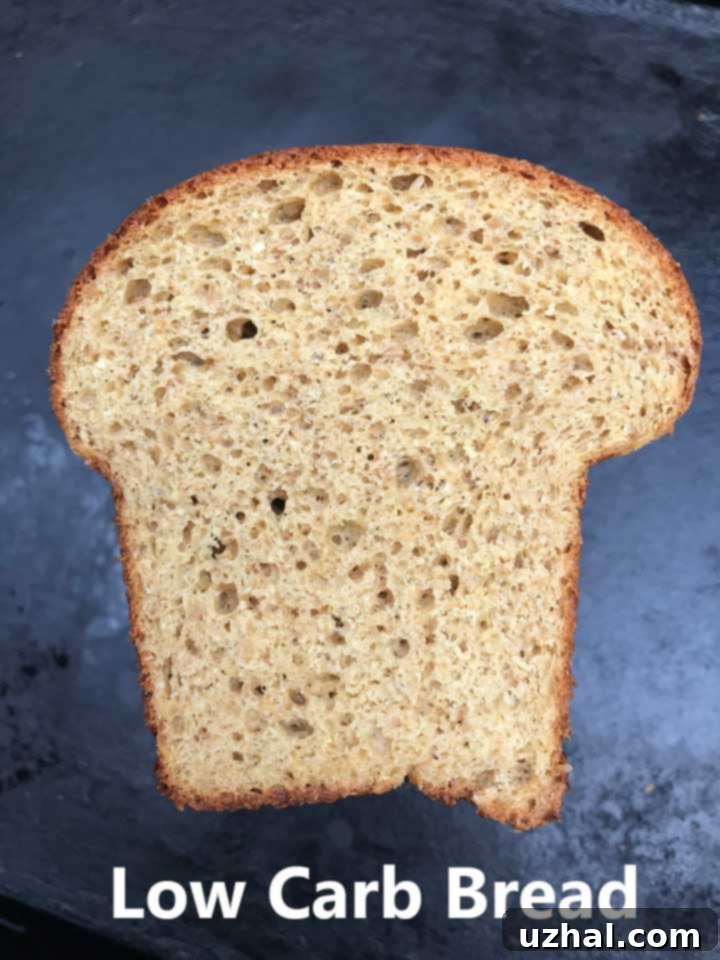
Understanding the Core Low Carb Bread Ingredients
This exceptional low-carb bread recipe draws inspiration from Diedre’s widely acclaimed YouTube recipe, which has garnered immense popularity and has been skillfully adapted by keto bakers across the globe. What makes this particular adaptation so appealing is its thoughtful balance. Unlike many “true keto” breads that are often very high in fat, my version offers a slightly lighter profile while retaining all the desired benefits. You’ll find a moderate amount of fat from essential ingredients like flaxseed and butter (or oil), which contribute to flavor and texture. However, the true stars of this recipe are vital wheat gluten, oat fiber, and psyllium husks. These ingredients are powerhouse additions, providing significant dietary fiber and substantial bulk without packing in excessive calories or carbohydrates. When meticulously calculating the nutritional values using online calculators, this recipe consistently delivers a lower calorie count ounce per ounce compared to many other low-carb bread options, making it a smart choice for mindful eating.
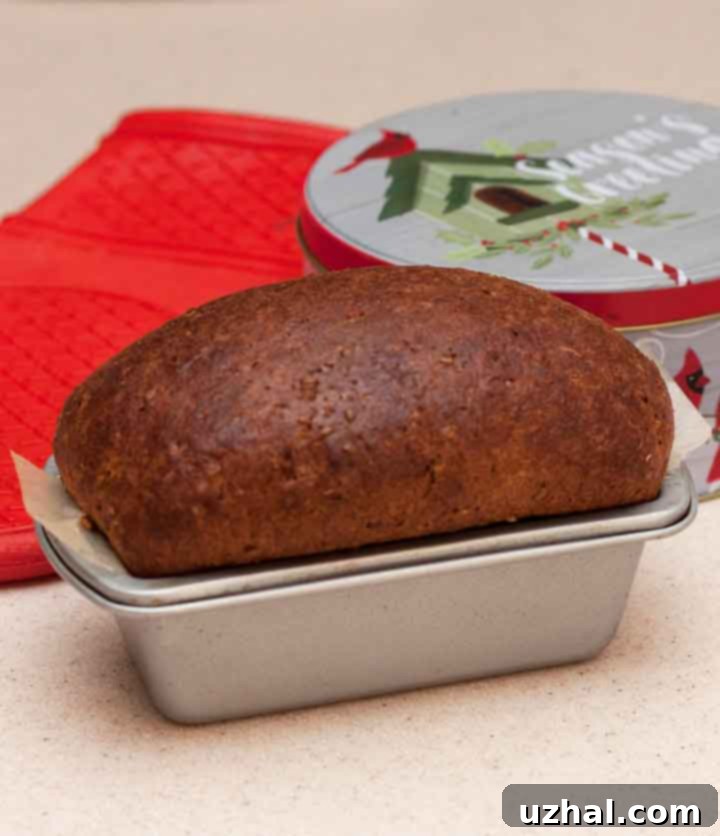
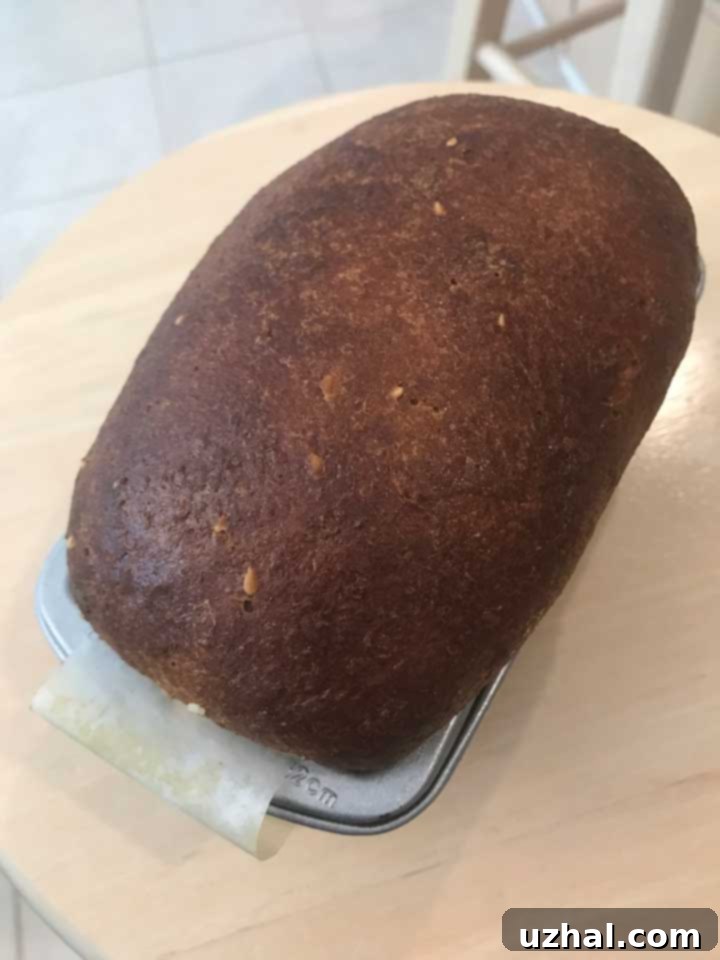
Choosing the Right Loaf Pan for Your Low Carb Bread
The flexibility of this recipe extends to your choice of baking vessel. You can effortlessly bake this low-carb bread in a standard 8 ½ by 4 ½ inch loaf pan, yielding generous, hearty slices perfect for substantial sandwiches or impressive toast. Alternatively, for those who appreciate smaller, more manageable portions, the recipe works beautifully when divided into two smaller loaves. I frequently opt for the latter, often using a 5.75×3 inch pan like this one. Even these smaller loaves rise impressively high, providing slices ample enough for charming lunch-sized sandwiches or perfectly proportioned pieces of toast. If you’re a newcomer to the world of low-carb bread baking and prefer to start with a smaller commitment, an excellent tip is to make a half batch. For this purpose, I highly recommend a square-shaped Pullman pan. This type of pan is fantastic for recipe testing and allows you to experiment without committing to a full-sized loaf, making your initial baking experience both easy and enjoyable.
Sourcing Your Specialty Keto Ingredients with Ease
The only minor hurdle you might encounter when embarking on this low-carb bread journey is gathering a few specialized ingredients that aren’t typically found in every pantry. When I first started baking this bread, I embarked on a scavenger hunt, driving to various stores across town in search of each component. While that can be an adventure if you enjoy it, the most straightforward and time-efficient approach is undoubtedly to order these ingredients online and have them delivered directly to your doorstep. This is especially true for oat fiber, which remains stubbornly difficult to find in most brick-and-mortar stores, at least in my experience. However, don’t let this deter you! The initial investment in these unique flours and binders is well worth it. Once you taste the incredible results of this bread, you’ll likely find yourself making it regularly, ensuring that these specialty ingredients are put to excellent and repeated use, making their acquisition a worthwhile investment in your low-carb baking repertoire.
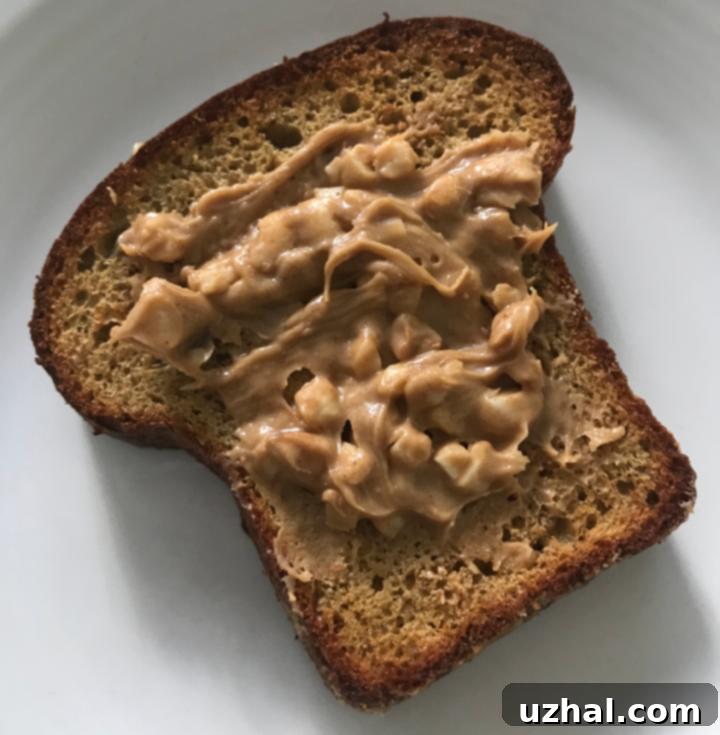
Detailed Breakdown of Essential Low Carb Bread Ingredients
Achieving the perfect texture and flavor in this low-carb bread hinges on a few key, specialized ingredients. Understanding their role is crucial for baking success. Here’s a deeper dive into each:
- Allulose Sweetener: My go-to is the Wholesome Sweeteners brand, often found in the baking aisle of larger grocery stores. If local availability is an issue, Amazon is a reliable source. Allulose is a fantastic choice for low-carb baking because it’s a rare sugar that provides sweetness without calories or a glycemic response. Crucially, it contributes to the soft, tender crumb and excellent browning that’s often missing in other low-carb baked goods, making it ideal for bread and muffins. Its unique molecular structure mimics sugar’s functional properties more closely than other alternative sweeteners, preventing the dry, crumbly texture often associated with keto recipes.
- Golden Flax Meal: This ingredient is typically quite easy to locate. I often use Bob’s Red Mill brand. While golden flax meal provides a lighter color and a milder flavor, dark flax meal can also be used if that’s what you have on hand, though it might result in a slightly darker loaf. Flax meal is a powerhouse, rich in omega-3 fatty acids and soluble fiber, acting as an excellent binder and contributing a subtle nutty flavor to the bread. It helps absorb moisture and gives the dough structure without adding significant net carbs.
- Oat Fiber: This is a critical ingredient and one you’ll almost certainly need to order online, as it’s distinct from oat bran or oat flour. Oat fiber is essentially pure insoluble fiber, stripped of its calories and carbohydrates. Its primary role in this recipe is to add bulk and structure, mimicking the texture of traditional flour without impacting your macros. It’s a zero-calorie, zero-carb filler that significantly improves the bread’s mouthfeel and crumb, preventing a dense or rubbery result. Do not attempt to substitute with oat flour or oat bran, as these will drastically change the carbohydrate count and final texture.
- Vital Wheat Gluten: Don’t let the name confuse you – while it contains gluten, it’s primarily the isolated protein from wheat, with most of the carbohydrates removed. For low-carb baking, vital wheat gluten is indispensable. It provides the elasticity, chewiness, and classic “bread-like” structure that other low-carb flours cannot. It’s what allows the dough to rise and hold its shape, giving you that satisfying, airy crumb. I’ve had success with both Bob’s Red Mill (often found at Whole Foods) and Anthony’s brand, readily available on Amazon. Note that while this ingredient is low-carb, it is not gluten-free, so it’s not suitable for those with celiac disease or gluten sensitivities.
- Psyllium Husks: Another crucial binder, psyllium husks are incredibly effective at absorbing moisture and creating a gel-like consistency, which is vital for building structure in gluten-free or low-gluten doughs. You can purchase them on Amazon (Anthony’s brand is linked, but Now brand whole husks also work well). It’s important to distinguish between psyllium husks (larger, coarser) and psyllium powder (finely ground, more concentrated). This recipe uses whole husks, but if substituting with powder, you’ll need slightly less (8 grams of powder is usually a little under a tablespoon, whereas whole husks might be a generous tablespoon to reach 8 grams). Always measure accurately by weight for best results, as the powder is much more potent.
- Active Dry Yeast: Essential for leavening, I prefer using regular active dry yeast over quick-rising variants. The process of proofing it in warm water with a touch of sweetener ensures it’s active and ready to make your bread rise beautifully. This crucial step guarantees a light and airy texture.
- Honey or Allulose (for yeast): A small amount of honey or allulose mixed with the yeast and water serves as “food” for the yeast. The yeast consumes this sugar during the proofing and rising process, ensuring it’s active and robust, without significantly impacting the final carbohydrate count of the baked bread. This kickstarts the fermentation process, which is key to a good rise.
- Eggs: Large eggs are essential for adding structure, moisture, richness, and additional protein to the bread. For optimal results, ensure your eggs are at room temperature. Room temperature eggs emulsify better with other ingredients, leading to a smoother dough and a more consistent, higher rise in the finished loaf.
- Butter (or Olive Oil): Two tablespoons of softened butter or 1 ½ tablespoons of olive oil add richness, flavor, and contribute to the tender crumb of the bread. Fat also helps with the bread’s keeping qualities, preventing it from drying out too quickly.
The Magic of a Single Rise and Cold Oven Start
One of the most appealing aspects of this low-carb bread recipe is its streamlined baking process. Unlike many traditional bread recipes that demand multiple rises, this dough conveniently goes straight from your stand mixer directly into the loaf pan. You’ll allow it to complete a single, focused rise right there in the pan for about an hour. What truly sets this recipe apart, however, is the innovative “cold oven start” method. Instead of preheating your oven, you place the proofed loaf directly into a cold oven, then set the temperature to 350°F and begin baking. For certain bread types, and this low-carb loaf is definitely one of them, starting in a cold oven yields a remarkably springier and higher-rising loaf. This happens because the gradual heating allows the bread’s crust to form more slowly, giving the gases produced by the yeast ample time and opportunity to expand and push the dough upwards before the exterior sets. The result is a loaf with a beautifully soft interior and an impressive volume. Below, you can see a visual comparison of the dough immediately after mixing and placing it in the pan, and then after its crucial one-hour rise.
Exploring the Bamboo Fiber Version
For those eager to experiment with alternative low-carb ingredients, I recently tested this recipe with bamboo fiber, an increasingly popular and truly amazing ingredient in keto baking. The results were outstanding, producing a loaf with a slightly lighter color and an even finer crumb. Bamboo fiber is known for its incredible ability to absorb moisture and add significant bulk without any discernible flavor or texture, making it an excellent substitute for oat fiber in many recipes. If you’d like to try incorporating bamboo fiber into your low-carb bread, simply replace the 60 grams of oat fiber with an equal amount of bamboo fiber (60 grams). Be aware that bamboo fiber can make the dough feel a bit drier, so you will likely need to adjust the hydration by adding an extra 2-4 tablespoons of water. I highly recommend adding this additional water gradually, one tablespoon at a time, at the very end of the mixing process until the dough reaches the desired soft and pliable consistency. This small modification can lead to an exciting new variation of this already fantastic recipe.
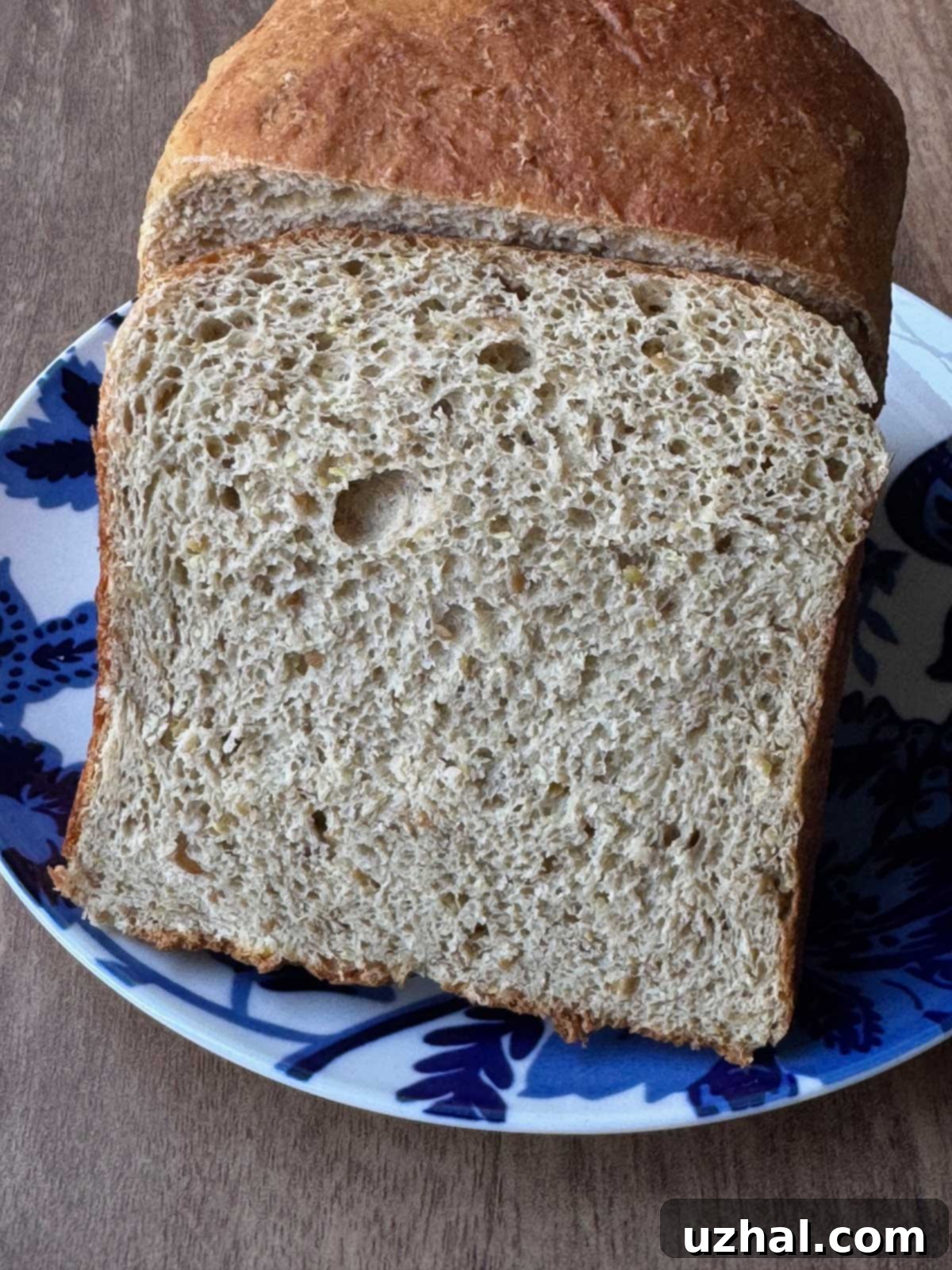
Serving Suggestions for Your Low Carb Loaf
This versatile low-carb bread isn’t just for toast and peanut butter! Its robust texture and neutral flavor make it an excellent base for a variety of meals and snacks. Use it to make hearty sandwiches with your favorite deli meats, cheeses, and fresh vegetables for a satisfying, guilt-free lunch. It’s also fantastic as a base for avocado toast, topped with everything bagel seasoning or a sprinkle of chili flakes. Transform leftover slices into crispy garlic bread, perfect alongside a low-carb pasta dish or a bowl of soup. Cube and toast it for homemade keto croutons to elevate your salads, or even dip it into a savory stew. For a sweet treat, try making low-carb French toast with a sugar-free syrup, or turn it into bread pudding using an almond milk base. The possibilities are truly endless, allowing you to enjoy classic bread-based dishes without compromising your dietary goals.
Storage and Freezing Tips
To keep your homemade low-carb bread fresh for as long as possible, proper storage is key. Once completely cooled, store the loaf in an airtight container or a bread bag at room temperature for up to 3-4 days. For longer storage, this bread freezes beautifully. Slice the cooled loaf entirely before freezing. This way, you can easily grab individual slices as needed without thawing the entire loaf. Simply place the slices in a freezer-safe bag, ensuring as much air as possible is removed to prevent freezer burn. They will keep well for up to 2-3 months. When you’re ready to enjoy a slice, simply pop it directly into the toaster from the freezer, and it will be perfectly crisp and ready to eat in minutes.
Troubleshooting Common Low Carb Bread Baking Issues
Even experienced bakers can encounter hiccups, especially with specialized recipes like low-carb bread. Here are a few common issues and how to address them:
- Dense or Heavy Loaf: This often indicates that the yeast wasn’t active enough or the dough didn’t rise sufficiently. Ensure your water for proofing the yeast is warm (around 105-115°F, not too hot or too cold) and that your yeast is fresh. Also, allow ample time for the single rise, placing the pan in a genuinely warm spot. The cold oven start helps, but proper initial rising is still crucial.
- Crumbly Texture: If your bread is too crumbly, it might be lacking in moisture or binders. Double-check your measurements for psyllium husks and vital wheat gluten – these are key for elasticity. If using the bamboo fiber version, ensure you added enough extra water gradually to achieve a soft dough.
- Not Rising Enough: Beyond yeast activity, ensure your vital wheat gluten is fresh. This ingredient is responsible for much of the lift. Also, sometimes simply giving it a little more time in a warm place can help, especially if your kitchen is on the cooler side.
- Uneven Baking: If one part of the loaf is over or under-baked, your oven might have hot spots. Consider rotating the pan halfway through baking. Using an oven thermometer can also help verify your oven’s actual temperature.
- Cup4Cup Gluten-Free Bread
- Low Carb Applesauce Oatmeal Bars
- Hazelnut Chocolate Chip Meringues
- Keto Oat Fiber Muffins
- Whole Wheat Walnut Bread
Recipe
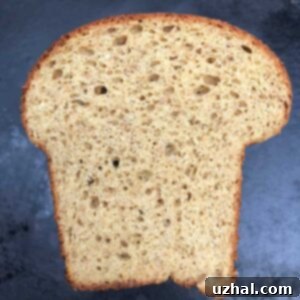
Low Carb Bread
Anna
Pin Recipe
Ingredients
- 1 cup water, warm 240 ml (approx. 105-115°F or 40-46°C)
- 1 tablespoon active dry yeast
- 1 teaspoon honey, sugar, allulose or inulin ** (to activate yeast)
- 2 large eggs (room temperature)
- 4 tablespoons allulose 45 grams (or two tablespoons of another non-allulose sweetener for less sweetness, adjust to taste)
- ½ cup oat fiber 60 grams (not oat flour or oat bran)
- 1¼ cup vital wheat gluten 150 grams
- ⅔ cup golden flax meal 70 grams
- 1 tablespoon psyllium (kind of rounded, so 8 grams) whole husks** 8 grams (use slightly less if using psyllium powder)
- 1 teaspoon salt
- 2 tablespoons butter, softened to almost melted 28 grams (or 1 ½ tablespoons olive oil for a dairy-free option)
Instructions
-
In a small bowl, combine the 1 cup of warm water with the active dry yeast and the teaspoon of honey (or allulose/inulin). Stir gently until well combined, then set it aside for 5-10 minutes to proof. You should see foam forming on the surface, indicating the yeast is active.
-
While the yeast is proofing, in the bowl of a stand mixer fitted with the whisk attachment, beat the room temperature eggs for about a minute. This incorporates air, making them light and fluffy, which contributes to the bread’s texture.
-
To the fluffy eggs in the stand mixer bowl, add all the dry ingredients: allulose, oat fiber, vital wheat gluten, golden flax meal, psyllium, and salt. Also add the softened butter. Give the mixture a quick stir by hand to just combine, then pour in the now-activated water/yeast mixture.
-
Stir the ingredients by hand with a sturdy spoon or spatula until a soft, shaggy dough begins to form. Once loosely combined, attach the dough hook to your stand mixer and place the bowl back on the stand.
-
Knead the dough with the dough hook for approximately 5 minutes on medium speed. The dough should become noticeably smoother, more cohesive, and develop some elasticity. It will still be somewhat soft due to the high fiber content, but it should pull away from the sides of the bowl.
-
Generously grease an 8 ½ by 4 ½ inch loaf pan. If you prefer smaller loaves, grease two 3×6 inch loaf pans. Carefully transfer the kneaded dough into the prepared pan(s) and gently press it down to fill the bottom evenly. Loosely cover the pan(s) with greased plastic wrap (greasing prevents the dough from sticking as it rises) and set it in a warm, draft-free place to rise for 1 to 1 ½ hours. The dough should visibly expand and rise about 1 inch over the rim of the pan in the middle.
-
After your bread dough has beautifully risen, place the loaf pan directly into a cold oven. Close the oven door, then turn the oven heat to 350 degrees F (175°C) and immediately set a timer for 30 minutes. The baking time can vary slightly depending on your oven. If your oven preheats quickly, the bread may be done within this timeframe. If your oven is slower to preheat, you might need to add an extra 10 minutes to the baking time. To confirm the bread is fully baked, insert an instant-read thermometer into the center of the loaf; it should read at or above 200 degrees F (93°C). Once baked, remove from oven and let cool slightly in the pan before transferring to a wire rack to cool completely before slicing.
Notes
For the psyllium component, the recipe calls for 8 grams. It’s important to be precise with this measurement. You can use either whole psyllium husks or powdered psyllium, as long as the weight is 8 grams. Keep in mind that powdered psyllium is much more concentrated than whole husks, so visually, 8 grams of powder will be a slightly smaller volume (a little under a tablespoon) compared to 8 grams of whole husks (a generous tablespoon). Measuring by weight is always the most accurate method for critical ingredients like psyllium, ensuring consistent results every time you bake.
Nutrition
